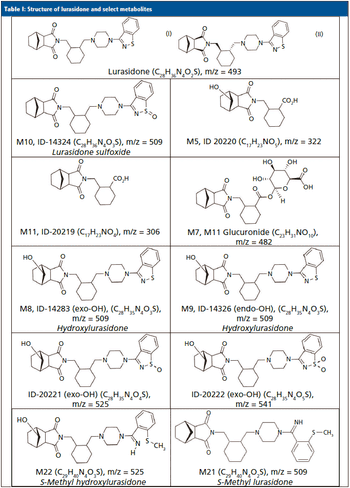
For lurasidone treatment adherence testing, an untargeted high-resolution mass spectrometry method was employed, using known positive human urine samples to identify the lurasidone metabolites and their relative abundance in urine.

For lurasidone treatment adherence testing, an untargeted high-resolution mass spectrometry method was employed, using known positive human urine samples to identify the lurasidone metabolites and their relative abundance in urine.

A novel “dilute-and-shoot” LC–MS/MS method is described for the analysis of “bath salts” sold as “legal” highs, including mitragynine and nine synthetic cathinones, in urine.

Although enzyme immunoassay (EIA) is a prevalent screening technique, it is also prone to issues such as high false positive rates because of lack of analyte specificity. Mass spectrometry was therefore investigated as an alternative screening technique for the ability to improve analyte specificity on a comparable time scale. In this study, a rapid on-line sample preparation and injection (ROSPI) method was developed using a commercially available guard cartridge on a conventional liquid chromatography–tandem mass spectrometry (LC–MS/MS) system. Using a two-point calibration curve to provide semi-quantitation, a robust method was developed and validated that improved upon the high false positive rate observed in immunoassay screening.

While immunoassay (EIA) is a prevalent screening technique it is also prone to issues such as high false positive rates because of lack of analyte specificity. Mass spectrometry was therefore investigated as an alternative screening technique for the ability to improve analyte specificity on a comparable time scale. In this study, a rapid online sample preparation and injection method was developed using a commercially available guard cartridge on a conventional LC–MS-MS system. Using a two-point calibration curve to provide semi-quantitation, a robust method was developed and validated that improved upon the high false positive rate observed in immunoassay screening.

An investigation of C18 and phenyl-hexyl column chemistries for definitive identification of 13 synthetic cannabinoid metabolites in patient samples.
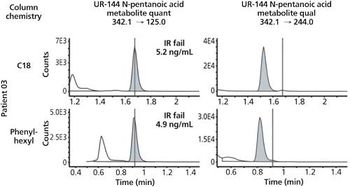
In recent years, synthetic cannabinoids (or “spice”) have experienced a boom in popularity. The negative health effects of these drugs coupled with their increasing popularity led to placement onto Schedule I by the DEA. In response, the chemists behind these illicit compounds frequently invent new compounds to circumvent the law. Thus, new classes and new examples within classes of “spice” continue to become available for illicit use. In this paper, we examine the use of two different column chemistries (C18 and phenyl-hexyl) in an effort to definitively identify synthetic cannabinoid compounds in patient samples.

An LC–MS-MS method is presented that can assist with monitoring substance abuse patients who are prescribed naltrexone, a narcotic antagonist.
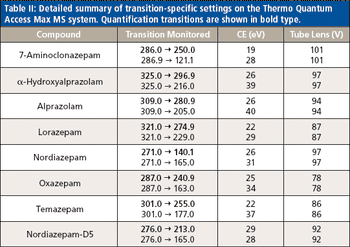
A new method was developed and validated using automated on-line solid-phase extraction (SPE) with tandem mass spectrometry (MS). Urine samples were enzyme-hydrolyzed and diluted before detection. The validated method was applied to positive authentic urine samples to evaluate concordance with high performance liquid chromatography (HPLC)–MS-MS results.

Enzyme immunoassay (EIA) is a conventional drug screening technique, but it can be limited by cross-reactivity that can lead to high false positive rates.
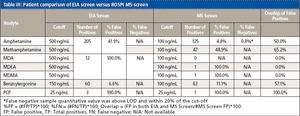
Published: March 1st 2015 | Updated:
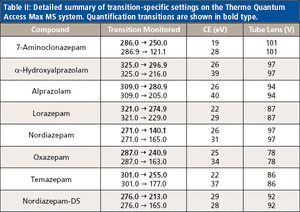
Published: May 1st 2015 | Updated:
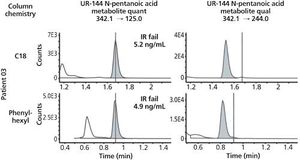
Published: April 1st 2016 | Updated:

Published: March 1st 2016 | Updated:

Published: July 1st 2016 | Updated:
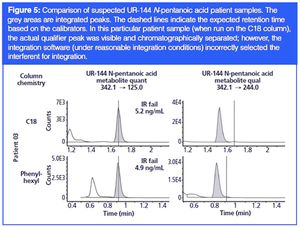
Published: May 18th 2016 | Updated: